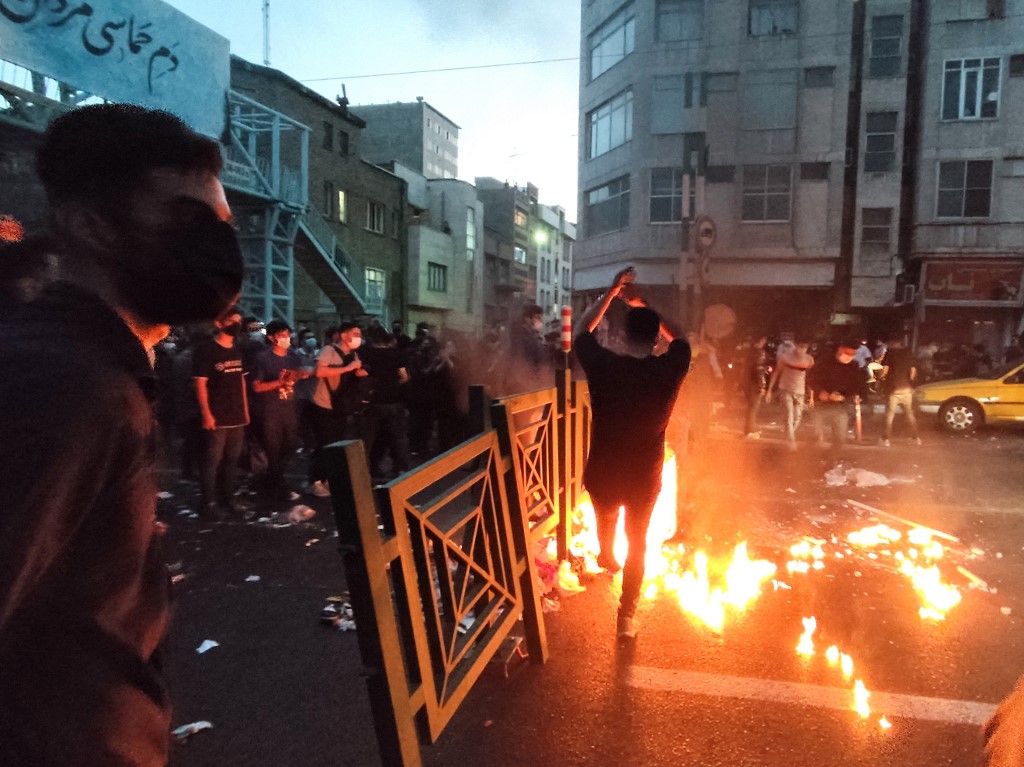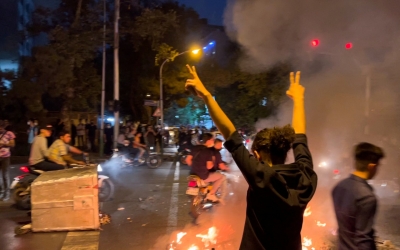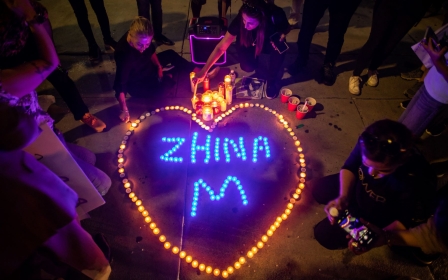Mahsa Amini: By focusing on the hijab, western media miss the point

Earlier this month, 22-year-old Mahsa (Jina) Amini died under suspicious circumstances after being arrested by Iran’s “morality police” for failing to properly wear the hijab, which has been compulsory for women since the 1979 revolution.
Since Amini’s death, thousands have taken to the streets to join women-led protests against the masculinist Iranian regime’s oppressive policing of their lives and their bodies. On the streets and on social media, protesters and their international supporters have been chanting “zan, zendegi, azadi” (translated as “women, life, freedom”).
In response to their courageous resistance, the Iranian regime has violently pushed back against protesters, disrupting internet access and deploying armed riot police, resulting in dozens of deaths.
While the Iranian woman is constructed as a symbol of piety, the French woman is constructed as an icon of secularism
As an academic focused on gender justice in the MENA region, I have been asked repeatedly for my take on the situation. I held back from responding immediately, as I am all too aware of how Muslim women’s modes of resistance are regularly co-opted and reported on in a reductive manner that strengthens harmful imperialist, Islamophobic and interventionist agendas, rather than offering any meaningful support or solidarity.
The latest protests must be contextualised within the broader struggle for women’s and minorities’ rights in Iran, and within a wider history of grassroots resistance to the regime’s oppressive policies.
New MEE newsletter: Jerusalem Dispatch
Sign up to get the latest insights and analysis on Israel-Palestine, alongside Turkey Unpacked and other MEE newsletters
They must also be understood within the context of women’s struggles for justice and freedom from overlapping forms of oppression elsewhere, making space for a transnational feminist solidarity that is truly inclusive and emancipatory.
Hypocritical saviour narrative
Since the beginning of the protests, international media have reported on the bravery of the protesters and on the fatal consequences inflicted by the Iranian government. While this has fuelled global support for the protests, it has also perpetuated an all-too-familiar, hypocritical saviour narrative from the West, which claims to support the same women and people that its policies, sanctions and brutal interventions have greatly harmed.
CNN’s Jake Tapper, for example, has said that imposing even more sanctions on Iran, which have been shown to have a particularly harmful effect on women, is not enough. He has called upon western leaders to “go further and make it even louder and clearer that they stand with the women” of Iran.
While he did not elaborate, he was evidently addressing the leaders of states that have a history of destructively and self-servingly invading Muslim countries, such as Iraq and Afghanistan, under the banner of promoting women’s rights, while simultaneously restricting the rights of Muslim women and other minority groups in the West.
Unsurprisingly, the media has also focused heavily on the issue of the hijab itself - particularly on women’s rejection of it, with images and videos circulating endlessly of women cutting their hair and burning their headscarves in protest. This has come with virtually no nuance as to what this means in the context of anti-government protests against a regime that has primarily grounded and defined its legitimacy in Islamic terms.
Divorced from that context, these symbolic acts are instead portrayed as a protest against Islam and religious control, which the West can, through sanctions and interventionism, eradicate and save Iranians from.
The bravery of protesters in Iran is indisputable, and many have paid a high price for it - but the media’s focus on the hijab, rather than on the women’s bold resistance to an oppressive regime and their ongoing struggle for their right to bodily autonomy, is simplistic and counterproductive.
In reducing the protest movement to the question of unveiling, rather than exploring it as a struggle for choice and freedom from intersecting forms of oppression, particularly on the basis of gender, religion and ethnicity, mainstream media narratives contribute to the victimisation and homogenisation of Iranian women. It presents them as all wanting one main thing: freedom from the headscarf.
Fuelling Islamophobia
The focus is thus shifted away from the regime’s multifaceted apparatuses of control over women and other oppressed minorities, and towards a narrow focus on the veil, leaving no room for a deeper engagement with the intersecting forms of oppression and marginalisation faced by people in Iran, and especially its Kurdish region, including the dire socioeconomic situation resulting from western sanctions.
The focus on the veil also portrays the issue as one that is only happening “over there”. It builds on and perpetuates a reductive understanding of Islam (in this case, one that is brutally enforced by the regime and its institutions) as the root of Iranian women’s oppression, which in turn fuels Islamophobia and harms Muslim communities abroad.
This ignores the pluralistic nature of Islam and conceals various rich historical accounts of women in Iran and in other Muslim contexts grounding their demands for rights and justice within an Islamic framework, known to many as Islamic feminism. And while Islam is certainly a significant factor in analyses of Iranian politics, it is also necessary to situate current events within a wider understanding of the intersection of gender and nationalism.
Although varied in form and extent, women around the world are instrumentalised by governments, whether Islamic or otherwise, to embody particular national values and identities. The media’s focus on the veil conceals the fact that the mechanisms of power in Iran are not so different from those behind the banning of the veil in France, for example.
While the Iranian woman is constructed as a symbol of piety, the French woman is constructed as an icon of secularism. In both cases, women’s bodies are policed and controlled to serve homogenising state projects. Selective media reporting allows for one to be addressed, while ignoring the other and the ways in which they are linked.
Shifting the focus from the issue of unveiling to questions around choice, bodily autonomy and freedom from oppression productively moves the narrative away from the reductive, dangerous binary of “West versus Islam”. It allows for a fuller appreciation of the demands of the protesters struggling against a patriarchal and oppressive regime, and for a more nuanced understanding of the power structures that have once again led to such large-scale anti-government protests.
Finally, it opens up possibilities for more effective forms of transnational feminist solidarity that empower women and minorities in Iran by amplifying their voices - and that cannot as easily be co-opted to serve simplistic narratives that bolster Islamophobic and interventionist policies.
The views expressed in this article belong to the author and do not necessarily reflect the editorial policy of Middle East Eye.
Middle East Eye delivers independent and unrivalled coverage and analysis of the Middle East, North Africa and beyond. To learn more about republishing this content and the associated fees, please fill out this form. More about MEE can be found here.







